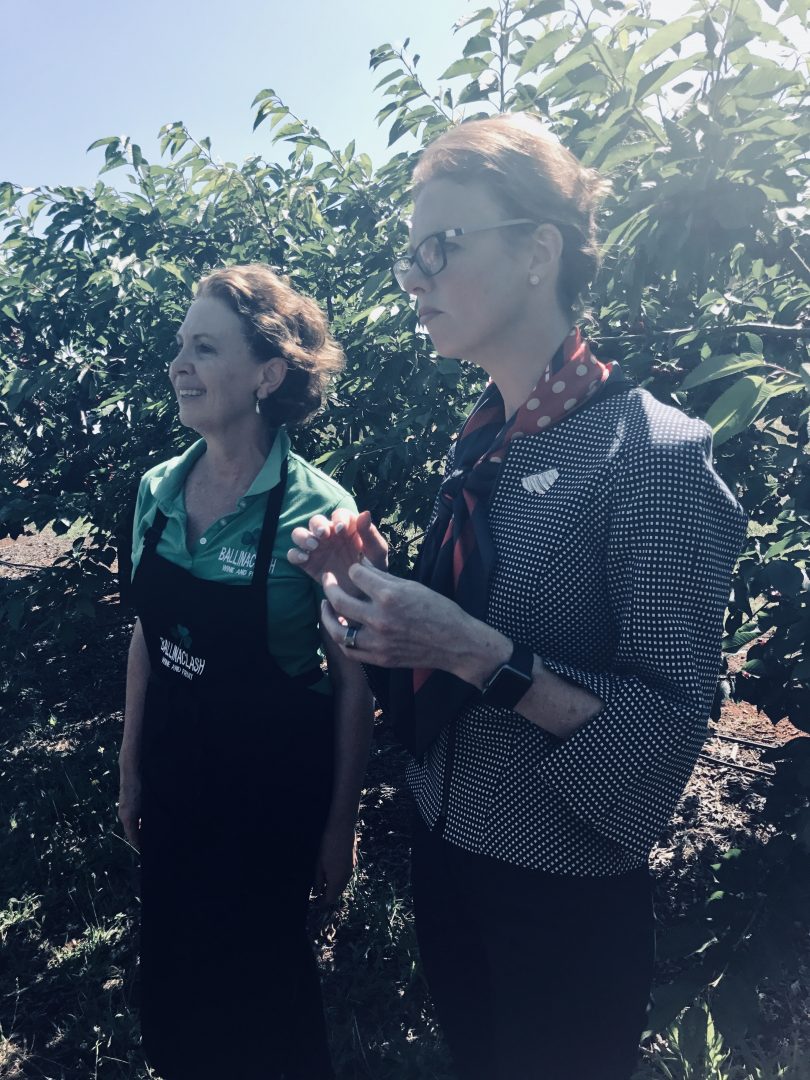
Fruit trees are in full blossom in the NSW South West Slopes ahead of a bumper harvest, but due to COVID-19 many of the region’s producers are without workers to pick cherries and stone fruit. Photo: Supplied.
As the clock ticks towards November, it’s starting to feel more like a time bomb for farmers and producers in the NSW South West Slopes who are facing bumper crops with very few hands on deck to help harvest them.
This is the time of year when the town of Young – the cherry capital of Australia – usually becomes Australia’s United Nations, with backpackers from all over the world converging for the annual cherry harvest.
Yet in 2020, there are no sightings of erratic drivers or nose-in parked cars – the common signatures of visiting backpackers.
So the call has gone out to anyone in town – or anyone who can come to town – who is free and able to assist with the harvest of cherries and other stone fruit in the coming months.
After months of farmers raising concerns about a harvest labour shortage due to COVID-19 restrictions, the warmer weather of the past week has sped up ripening time and now even the local state member of parliament has stepped in, urging the community to come together to help harvest the region’s agricultural crops.
NSW Member for Cootamundra Steph Cooke said with national borders closed due to COVID-19, farmers don’t have the number of seasonal workers available to harvest cherries, stone fruit and broadacre crops, and assist with livestock industries.
She said there is a giant opportunity for school leavers, retirees and job seekers to take part in bringing in the bumper harvests forecast for the coming months.
“Primary producers and members of the community can come together this harvest to get what is shaping up to be our best harvest in years out of the orchards, off the paddocks and to market,” said Ms Cooke.

NSW Member for Cootamundra Steph Cooke, with Cath Mullany of Ballinaclash orchard near Young, is asking anyone who is available to come to the South West Slopes to help with this year’s harvest. Photo: Edwina Mason.
“This is an opportunity for our school leavers, those embarking on gap years and people not currently working to be part of this year’s harvest, earn some great money and try working in a new industry. I am urging everyone who can to get involved.”
Cherry Growers Australia (CGA) president Tom Eastlake, of Young, said if farmers don’t have staff, the fruit doesn’t get picked.
“We have a time-sensitive crop,” he said. “Even rain events, heat or cold can impact the fruit and you can’t harvest.”
Mr Eastlake suggested two points of contact for people seeking to take up the opportunity to assist with harvest.
“Harvest Trail is a regular source of employees for the region,” he said. “We’ve been working with them to proactively encourage people who haven’t worked in horticulture in the past to try the industry this year.”
CGA and Harvest Trail are working together to ensure facilities such as transport and accommodation are available to interested people.
Mr Eastlake said a single point of contact for primary producers, interested workers, transport and accommodation providers has been created thanks to cooperation of all levels of government and agencies.
The contact person is Ed Milne, who can be contacted on (03) 9864 6000 or via specialist recruitment company Bayside Group.
To find available harvesting work in other regions, visit Help Harvest NSW.
The NSW Government has written the new Agricultural Workers Code into public health orders in an effort to secure more skilled workers for the upcoming harvest.
This change to the Public Health Order means eligible workers have a pathway to enter NSW. Under the code, workers will need to have a border permit, proof of identity and a place of residence, and they may need to use hand sanitiser and wear protective equipment such as a face mask and gloves.
Workers will have to keep records of their movement, who they have been in contact with and details of where they have stayed and travelled.
Agricultural worker permits are available from Service NSW.
Original Article published by Edwina Mason on About Regional.













